Roy Morgan has released its labour force estimates for September, which reported a solid decline in both unemployment and underemployment.
According to Roy Morgan, unemployment decreased by 37,000 to 1,739,000 (down 0.3% to 10.8% of the workforce) while under-employment dropped 243,000 to 1,499,000 (down 1.6% to 9.3%).
However, as illustrated below, both unemployment and underemployment have trended up sharply this year:
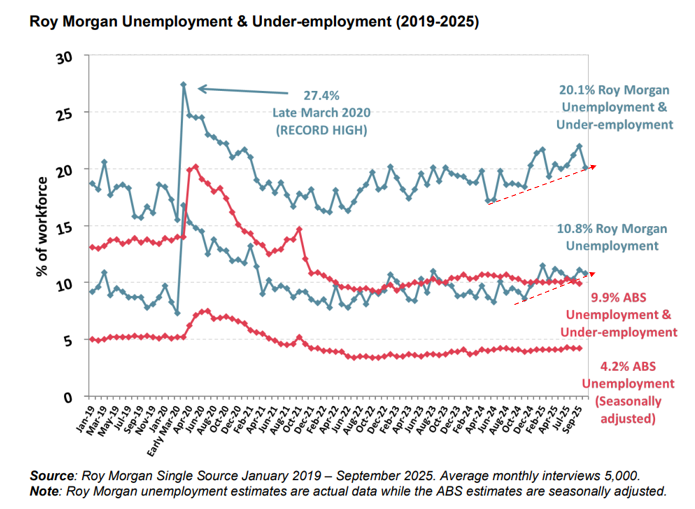
Overall, 20.1% of Australia’s labour force was estimated to be unemployed or underemployed in September 2025, up 1.4% from September 2024.
Roy Morgan also reported that 3.2 million Australians were either unemployed or underemployed in September. In fact, “overall labour under-utilisation remains stuck above 3.2 million for a fourth straight month and has averaged a high 3.3 million so far this year”, noted Michele Levine, CEO Roy Morgan.
The increase in unemployed and underemployed above 3 million reflects a combination of softer labour market conditions alongside the strong rise in the nation’s labour supply amid record net overseas migration.
Roy Morgan estimates that there were 23,140,000 people in Australia aged 14+ in September 2025 (up 1,766,000 from September 2022—more than double the pre-pandemic average of 840,000 over a three-year period since 1999).
The workforce in September 2025 was 16,058,000 (up 1,151,000 from three years ago)—comprising 14,319,000 employed Australians (up 614,000) and 1,739,000 unemployed Australians (up 537,000).
Roy Morgan CEO Michelle Levine also reported that the labour market has shifted in the past year from full-time employment to part-time employment.
“A comparison to a year ago shows the nature of the employment market is shifting with full-time employment down 150,000 from September 2024, but part-time employment increasing 164,000 over the same period – a net growth in overall employment of 14,000″, Levine noted.
“This shift is clear when looking at the share of employed Australians in full-time and part-time employment. The share of employed Australians in part-time employment is now 35.6%, up 1.1% points from a year ago, compared to 64.4% now in full-time employment”.
It is important to note that Roy Morgan effectively counts someone as unemployed if they want a job but are unable to get one. Therefore, it is a broader definition than the ABS’ stricter unemployment measure, which explains why Roy Morgan’s is always higher.
Nevertheless, the trend rise in Roy Morgan unemployment, illustrated more clearly by Justin Fabo from Antipodean Macro below, and the pivot to part-time suggest that Australia’s labour force continues to soften.
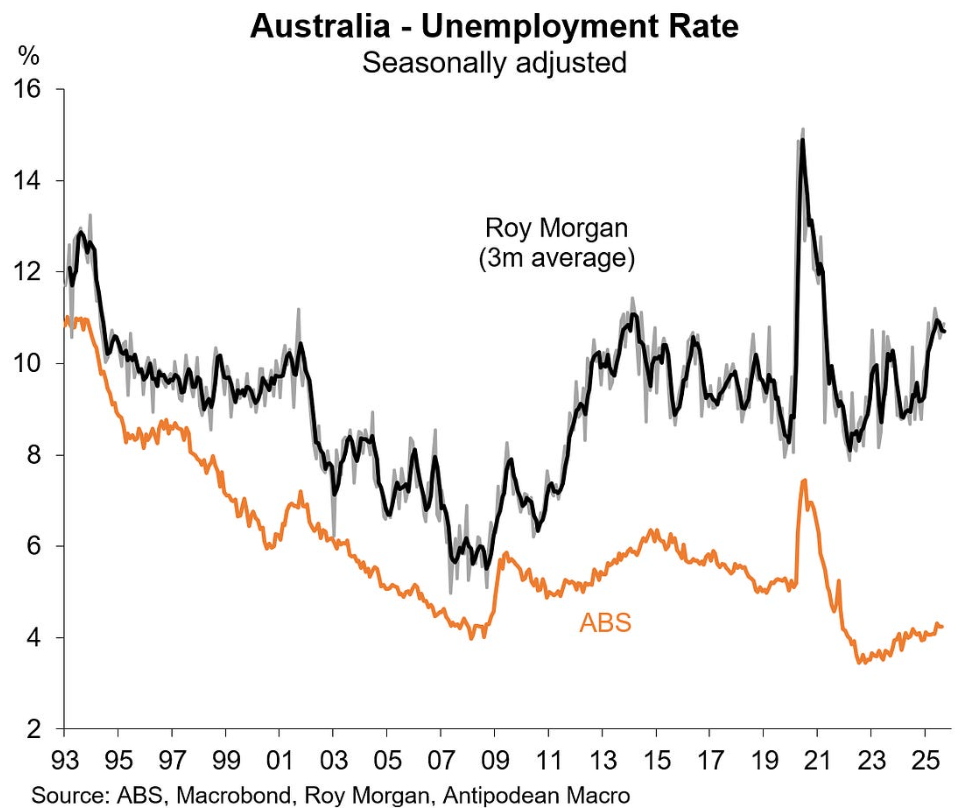
Looking ahead, a disorderly handover from non-market (government-funded) sector job creation to the private (market sector) is the biggest risk to the labour market.
According to the ABS, this unprecedented boom in government-funded jobs has driven Australia’s job growth and historically low unemployment rate.
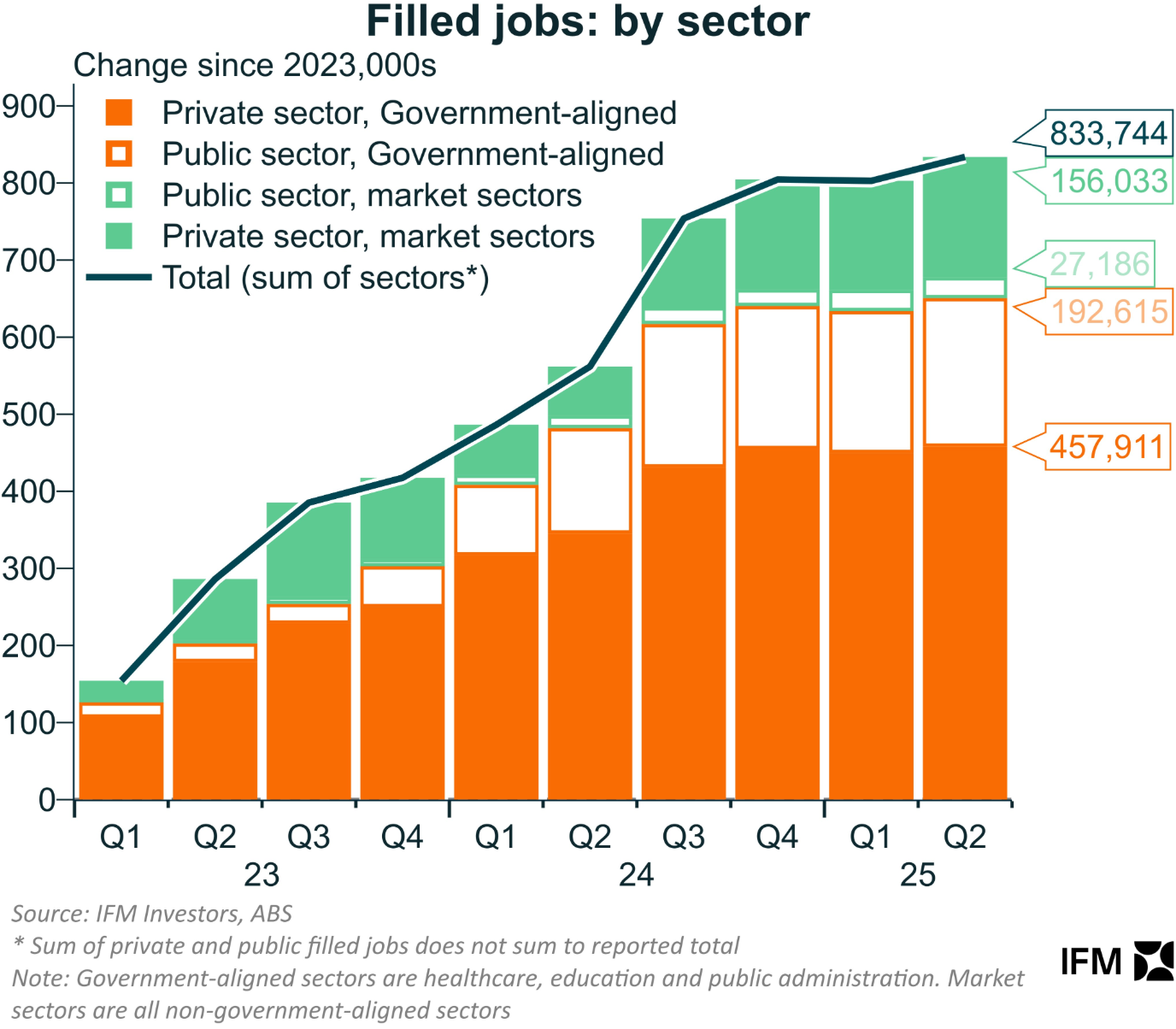
The non-market sector, comprising public and private service providers that rely on government funding, accounted for around 60% of total job creation since the pandemic and nearly 80% of job creation over the past two years.
This non-market job growth has been driven by the $52 billion blowout in the National Disability Insurance Scheme (NDIS), which has fueled the growth of carer jobs.
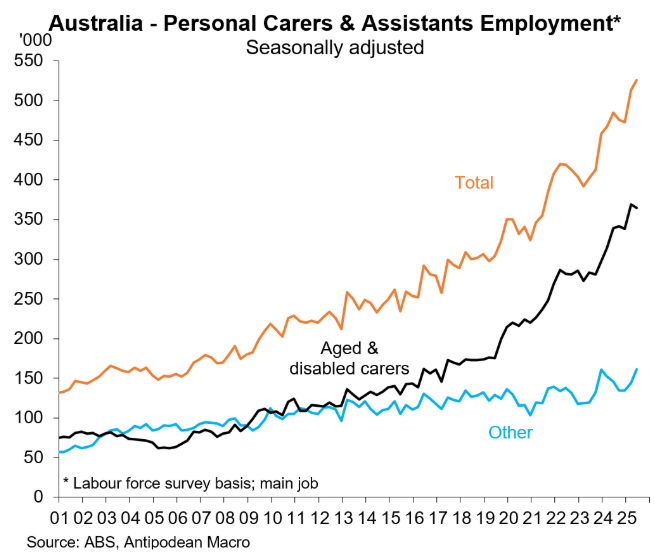
State and federal budgets are stretched, resulting in cost-cutting and austerity—neither of which is helpful for non-market employment.
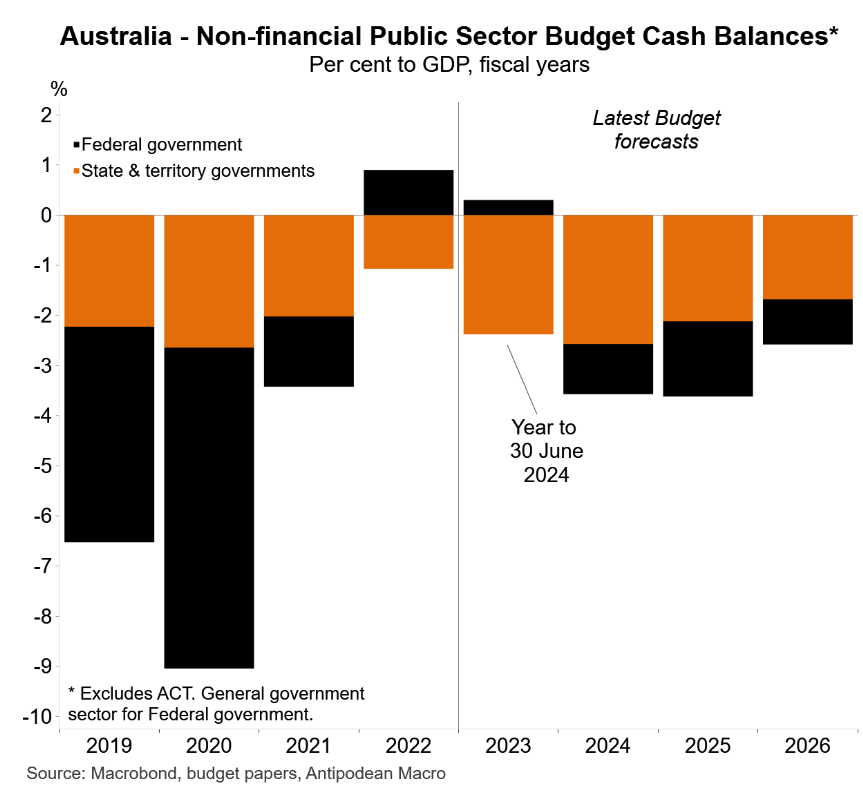
State and federal governments are now seeking to trim costs and downsize their workforces.
The federal government is also under immense pressure to reduce the cost of the NDIS, which has been the primary driver of the large increase in non-market employment.
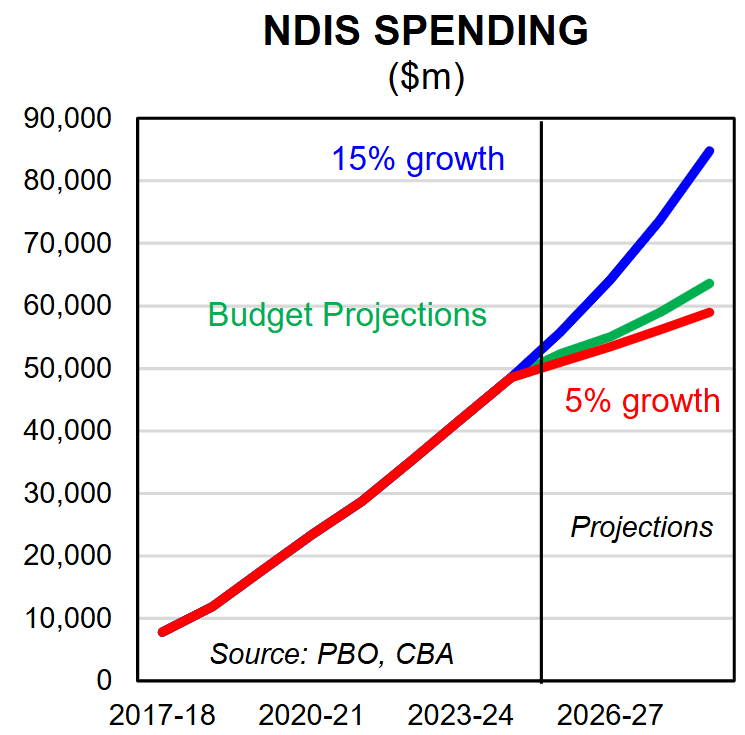
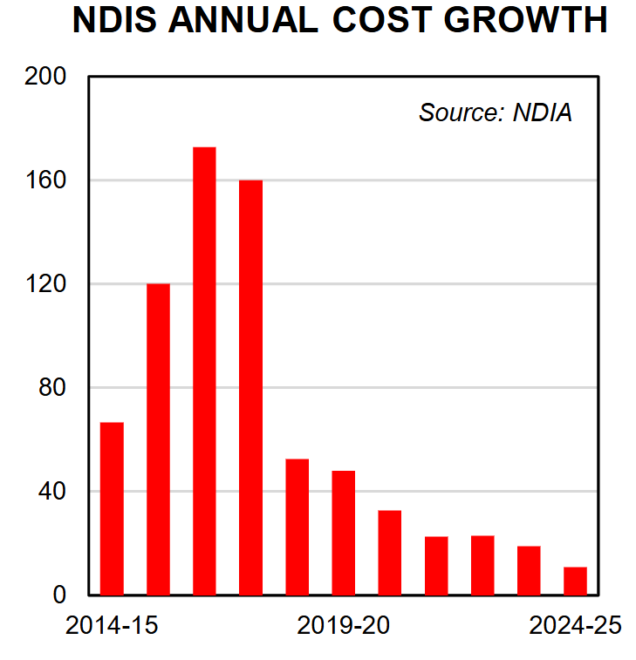
With Australia’s private sector failing to fire up and the government continuing to import hundreds of thousands of migrant workers each year, there is a real possibility that the country’s unemployment rate will rise well beyond the RBA’s forecast.
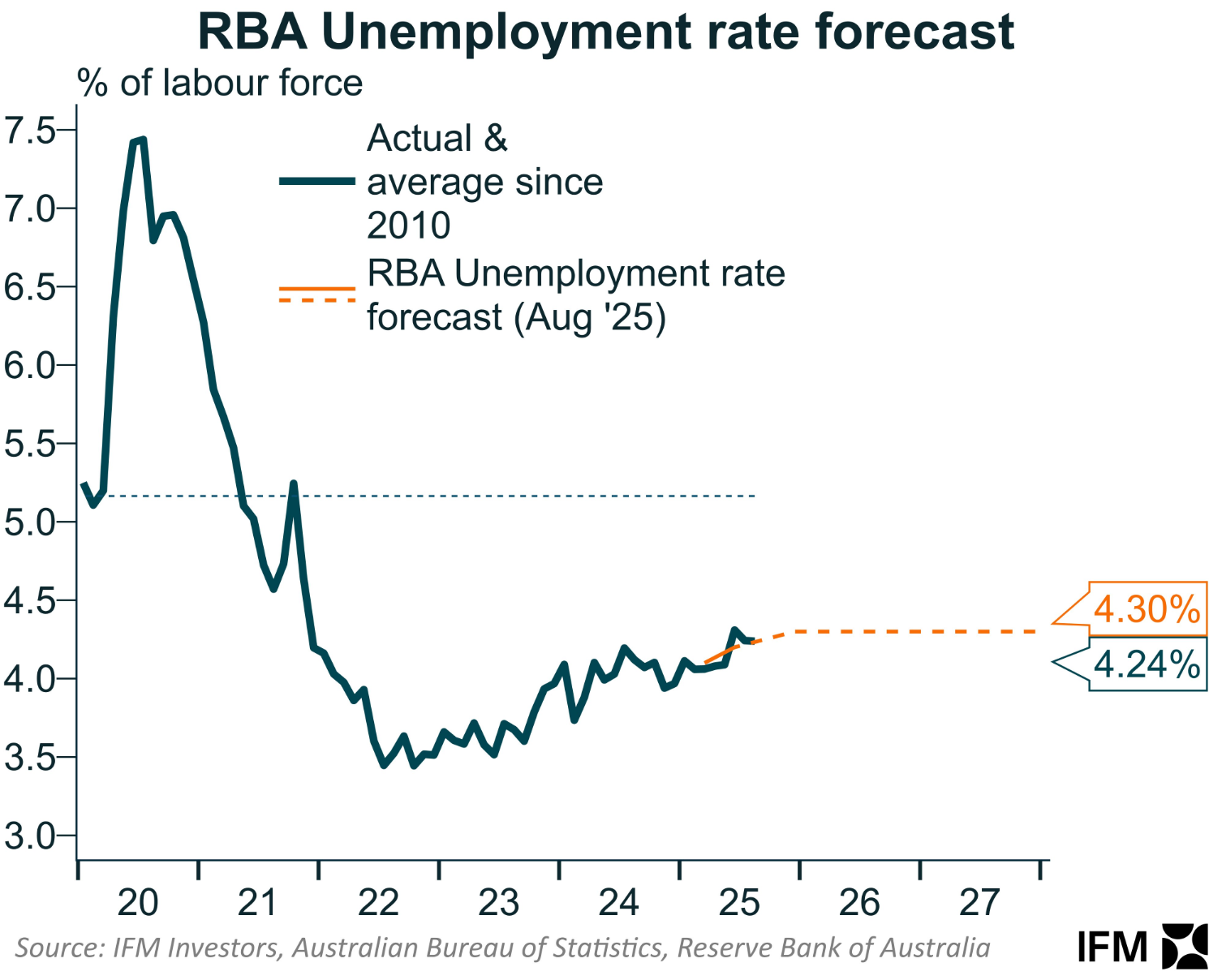
As a result, rising unemployment is also the single greatest downside risk for Australian interest rates.

